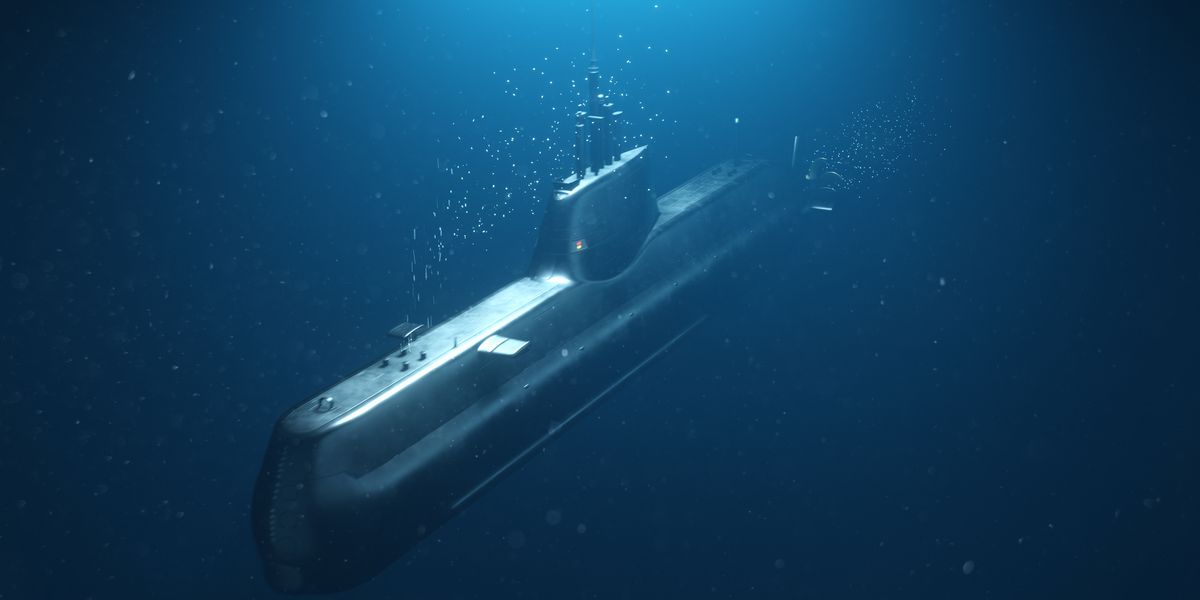World
Chinese Scientists Say They’ve Found the Secret to Building the World’s Fastest Submarines

IMAGINE A SUBMARINE SO FAST it can outrun the torpedo meant to intercept it. That could be a very real possibility thanks to a breakthrough propulsion method that Chinese scientists claim could produce the fastest submarines in the world. The approach would involve submarines using “laser propellers” to travel at incredible speeds, with lasers creating tiny explosions that would propel the submarine forward at previously unheard of speeds. While the technology is theoretically possible, it does suffer from a potentially fatal flaw that would make any submarine using it even more vulnerable to detection than ever before.
The South China Morning Post, a Hong Kong-based newspaper, first brought the new technology to light in April 2024. According to the Post, the process uses lasers as a form of underwater propulsion to achieve not only stealth but super-high underwater speeds that would rival jet aircraft.
The use of lasers as a form of propulsion dates as far back as 1972, when it was originally proposed as a method for powering spacecraft. In atmospheric travel, the technology is fairly straightforward and understood: the underside of an aircraft is blasted with a laser that superheats the air underneath it, creating a plasma that explodes the air and propels the craft upward. Atmospheric laser propulsion has only been tested with scale models under controlled conditions and has not resulted, so far, in an actual manned craft.
Now, researchers at Harbin Engineering University propose using the same method to propel objects underwater. The process involves covering a submarine with a network of optical fibers thinner than a human hair. The fibers are then shot through with lasers powered by a two-megawatt power source. The lasers create a plasma that vaporizes any water it comes into contact with, resulting in thrust. The vaporization also creates a shroud of bubbles the submarine can then pass through, one with much less friction than if the sub were passing through the surrounding seawater.
According to The Post, underwater laser propulsion can generate up to 70,000 newtons of force. This amount of force in an underwater, human-made craft is unprecedented, finding a parallel only in aircraft that fly several hundred miles per hour. The Harbin University engineers, led by researcher Ge Yang, believe this power could be used to give Chinese submarines and weapons a major advantage. According to the SCMP, it could “allow a submarine to travel faster than the speed of sound.” Furthermore, unlike the combination of turbines, gears, and propellers that propels conventional submarine designs, laser propulsion would be virtually silent.
This combination of speed and silence would be the holy grail of submarine warfare, rendering submarines nearly invincible against surface warships and commercial shipping alike. Having such technology in the hands of China is frightening—or would be, if not for one detail.
Most submarines use propellers to move underwater. As the propeller turns faster, increasing the submarine’s speed up to 35 knots, it creates pressure in the surrounding water. This pressure in turn creates heat, which boils the water, forming a trail of tiny bubbles left behind in the sub’s wake. The bubbles eventually burst, creating a sound like “rocks going in a pipe.” The process is known as cavitation, something that fills submariners with dread.
Submarines survive by staying undetectable, and in the underwater realm that means being very quiet. Cavitation noise can be picked up by a process called passive sonar, which receives sounds in the ocean without transmitting the way active sonar does. There is no solution to cavitation other than avoiding it. A submarine can risk cavitation noise in friendly waters, trading noise for speed, but must slow down where the enemy might be listening.
The problem of cavitation makes Harbin University’s new laser propeller method impractical for undersea warfare. In a wartime South China Sea scenario, a Chinese submarine might outrun its American adversary using laser propulsion, but like a speeding fire truck blaring its siren, it would be easy to track. Eventually it must stop—and everyone listening will know where it stops. Even if a submarine could outrun surface ships and other conventionally powered submarines, it could not outrun anti-submarine aircraft.
The fact that the research was published in an open setting, where China’s rivals can read it, likely means the Chinese government believes it has little to no military value. In the 1980s, for instance, the U.S. Air Force kept secret the existence of the F-117A Nighthawk stealth fighter for nearly a decade, until leaks and a crash of one of the planes in the California desert forced the Pentagon to acknowledge their existence. If the U.S. had what it considered a breakthrough means of submarine propulsion that was both fast and silent, the Navy would almost certainly keep it a secret as long as possible.
The super sub in our South China Sea scenario suffers from a fatal flaw: while laser propulsion will lead to faster submarines, it will also lead to noisier submarines—and noisy submarines are dead submarines. Although intriguing, there just isn’t any practical value in a sub that is both fast and loud at the same time. In the meantime, it’s a sure bet China, Russia, the U.S., and the other major submarine powers are working to develop a faster way to move submarines … one that doesn’t sound like rocks in a pipe.
Kyle Mizokami is a writer on defense and security issues and has been at Popular Mechanics since 2015. If it involves explosions or projectiles, he’s generally in favor of it. Kyle’s articles have appeared at The Daily Beast, U.S. Naval Institute News, The Diplomat, Foreign Policy, Combat Aircraft Monthly, VICE News, and others. He lives in San Francisco.










.jpg)